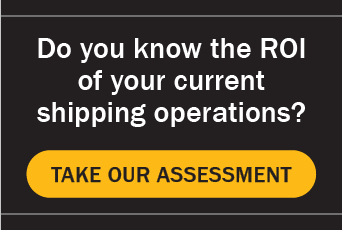Six Top Warehouse Profit Killers and How to Avoid Them – Part I
After visiting an average of 100 warehouses a year over the past several decades, I’m fairly sure I’ve seen some of the best-run and worst-run warehouses in the country.
Running a warehouse well is no piece of cake – and running a profitable warehouse operation is all the more difficult. However, six common problem areas erode profitability.
This blog covers the first two of the six problem areas.
For Greatest Payback, Fix Internal Operations First
Trying to increase revenue? It’s tempting to focus on growing the sales team. But hiring more salespeople to increase sales, even at a 20% profit rate, makes little sense if your in-house operations are bleeding dollars.
You can gain larger returns, faster, by investing in optimizing your warehouse operations. Over the years, we’ve calculated that problematic warehouse operations cost companies millions of bottom-line dollars per year. Increasing the sales team will not recover those costs.
Every dollar that can be saved by implementing quality improvements becomes dollars that go directly to your company’s profits.
Based on our experience, every in-house dollar you can recover through improvements in your warehouse operations is worth $5 in new sales.
So we recommend that companies focus first on solving profit-eroding warehouse problems. Here are the first two:
Risk I: Not understanding operational and industry metrics
It is not unusual for companies to focus on “getting the orders out the door” every day without monitoring the operational metrics in their shop or industry. Yet these metrics are critical to determine cost-effective day-to-day staffing requirements in the warehouse.
Without metrics to serve as a benchmark for staffing and production levels, operations can become bloated. Too many operations have as much as 30% excess staff on hand, resulting in unnecessary employment costs.
It’s important to have extra staff on hand to cover vacations, sick leave, and training, but excess staffing costs quickly add up and shrink profitability.
Consider this: having just three extra employees on the payroll will cost the company close to $500,000.00 over the next five (5) years.
Make sure your supervisory staff has good team management skills but also understands the importance of tracking metrics. Put some of your best people in warehouse operations to monitor and improve operational efficiency; you’ll be shocked at the positive impact it has on your company’s EBITDA.
Industry-leading companies establish and monitor warehouse metrics as a key to maintaining profitability. They also provide C-suite mentoring, the necessary tools and staffing required to be effective, and often assign young management talent for a three- to five-year position in the warehouse.
A number of these young managers grow and become presidents and VP’s of operations in the same companies and are leading them to great success.
Risk II: Buying without a proven ROI
One of the biggest frustrations on the part of upper management is PPR – Past Purchase Regret − with good reason. The money spent on unproductive warehouse equipment utilizing inefficient process flows would shock most CEO’s.
Equally important, one or two bad system purchases along the way can cause management to hesitate in purchasing technology that is truly needed for efficient operations. Conversely, a well-run, successful project can provide the payback to encourage and fund more successful purchases and projects.
When buying anything, do the math to cost-justify your investment and guarantee the return on investment ROI you can expect from a proposed solution. Choose vendors who can partner with you in this analysis. Consider multiple vendors to determine which option will deliver the greatest ROI for your specific operations and budget.
Where to Focus First
What new technologies will have the greatest impact on immediate and long-term profitability? There is plenty of software for logistics management out there, but my recommendation is to focus first on having a good warehouse management system (WMS) and investing barcoding the inventory in your warehouse.
When it’s time to upgrade your WMS system, start by reviewing the Gartner Magic Quadrant for WMS systems used in your industry. Consider multiple vendors and choose the system that both meets your needs and your budget.
Next, price the project implementation realistically. Many vendors hesitate to quote a fixed price because larger projects often have too many unknowns, so plan for additional project costs in your budget. For budgetary purposes, use 1.5 times the vendor’s estimate as a more realistic cost even on a well-run project.
Once you have selected a WMS, make sure you have a great executive team sponsoring and keeping an eye on the project − the future growth of the company is riding on the quality of the WMS system implementation.
Much of the day-to-day WMS project work can be overseen by mid- and low-level managers, but they will need access to senior management when critical resources or decisions need to be made and supported throughout the organization.
It’s also important, at this point, to review your shipping process for domestic and international orders. Your shipping system should work hand-in-hand with the WMS system to streamline shipping operations.
You can gain significant efficiencies in the shipping process with a flexible carrier-compliant multi-carrier shipping system to manage all your carriers for parcel, less-than-truckload (LTL) and truckload (TL) shipments. A single-platform solution will deliver significant savings by eliminating manual processes and yield the best, lowest-cost delivery results.
Plan for Project Success
Following are the most common reasons that system projects fail are:
Poor project requirements document and project plan. Properly document your WMS project BEFORE you sign on the dotted line. Paying for this portion up-front will give you time to document your project without the greater project’s financial clock running.
Poor project management or unqualified project staff participation. Often after the deal is signed, only a project manager and one or two vendor staff are assigned to run your entire project. This is a formula for failure. Make sure your team includes a project manager and has the right staff resources to accomplish the work.
High project staff turnover from the vendor or company side. This will kill a project due to project knowledge lost, and time required to bring new staff up to speed.
Lack of executive team buy-in, sponsorship, and oversight. Inevitably, unexpected project needs and decisions come up that require executive support to keep it on track. Without it, the project can falter and not achieve its true ROI or even fail.
Shoddy or minimal testing. Last-minute testing can ruin months of work and send your money down the drain. Projects are often slow to start and the testing of real scenarios and volumes gets pushed to just a few days before go-live. I’ve seen instances where the project lasted nine months, yet 90% of the testing took place five days before go-live.
Taking time to thoroughly run test cases for all possible scenarios will result in a smooth go-live, thereby creating positive acceptance from the WMS users and confidence by management in the project’s success.
Focusing on these key areas will put your warehouse operations on a good path to optimal performance. In Part II, we’ll cover two additional topics. Stay tuned.
 Rick Williams, president and CEO of CLS, is a transportation expert with 40 years of experience in shipping and supply chain operations and technology. CLS helps companies improve warehouse productivity by combining streamlined workflows with multi-carrier shipping software, integrated pack/ship stations, data collection and more.
Rick Williams, president and CEO of CLS, is a transportation expert with 40 years of experience in shipping and supply chain operations and technology. CLS helps companies improve warehouse productivity by combining streamlined workflows with multi-carrier shipping software, integrated pack/ship stations, data collection and more.





